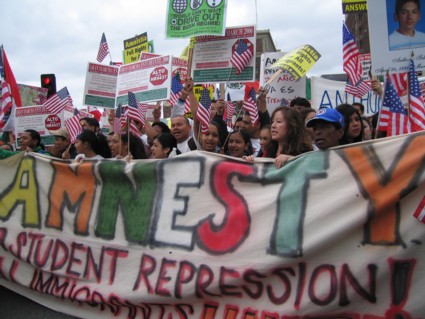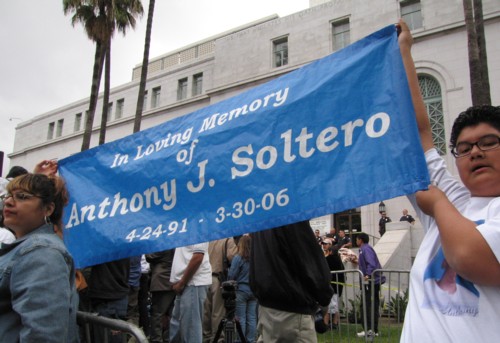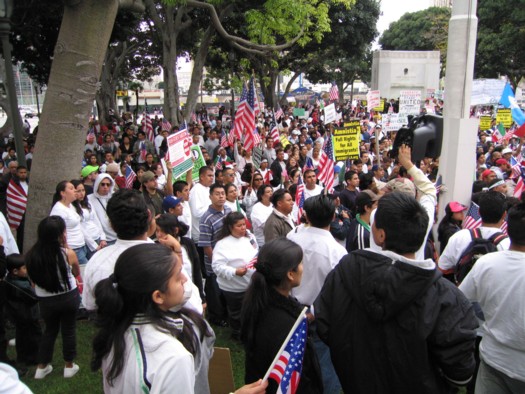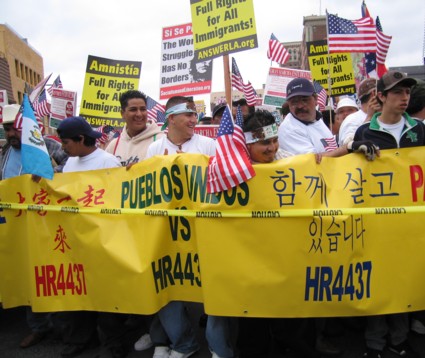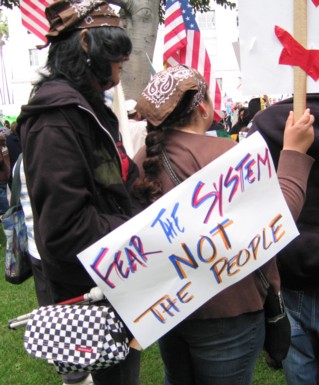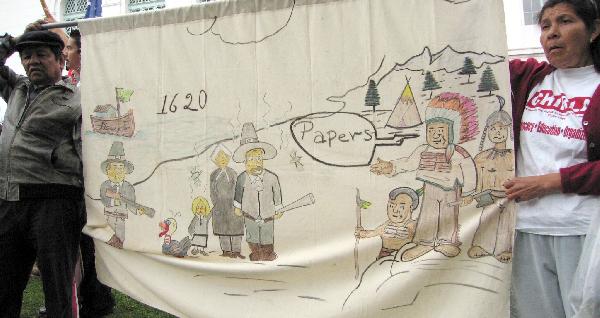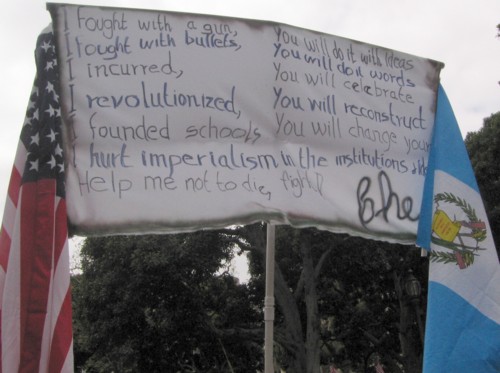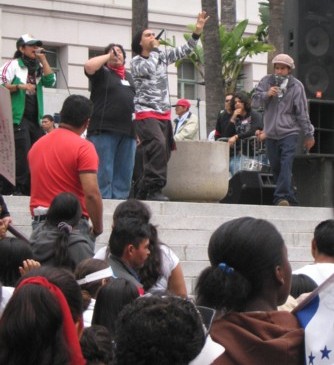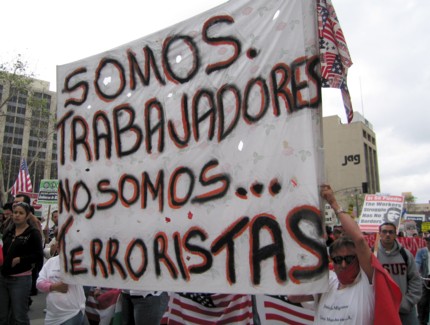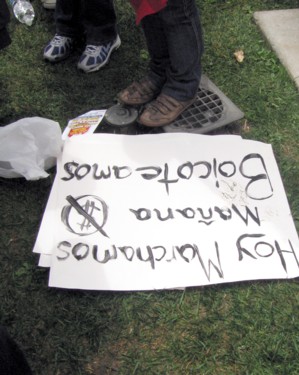| About Us | Contact Us | Calendar | Publish | RSS |
|---|
|
Features • latest news • best of news • syndication • commentary Feature Categories IMC Network:
Original Citieswww.indymedia.org africa: ambazonia canarias estrecho / madiaq kenya nigeria south africa canada: hamilton london, ontario maritimes montreal ontario ottawa quebec thunder bay vancouver victoria windsor winnipeg east asia: burma jakarta japan korea manila qc europe: abruzzo alacant andorra antwerpen armenia athens austria barcelona belarus belgium belgrade bristol brussels bulgaria calabria croatia cyprus emilia-romagna estrecho / madiaq euskal herria galiza germany grenoble hungary ireland istanbul italy la plana liege liguria lille linksunten lombardia london madrid malta marseille nantes napoli netherlands nice northern england norway oost-vlaanderen paris/Île-de-france patras piemonte poland portugal roma romania russia saint-petersburg scotland sverige switzerland thessaloniki torun toscana toulouse ukraine united kingdom valencia latin america: argentina bolivia chiapas chile chile sur cmi brasil colombia ecuador mexico peru puerto rico qollasuyu rosario santiago tijuana uruguay valparaiso venezuela venezuela oceania: adelaide aotearoa brisbane burma darwin jakarta manila melbourne perth qc sydney south asia: india mumbai united states: arizona arkansas asheville atlanta austin baltimore big muddy binghamton boston buffalo charlottesville chicago cleveland colorado columbus dc hawaii houston hudson mohawk kansas city la madison maine miami michigan milwaukee minneapolis/st. paul new hampshire new jersey new mexico new orleans north carolina north texas nyc oklahoma philadelphia pittsburgh portland richmond rochester rogue valley saint louis san diego san francisco san francisco bay area santa barbara santa cruz, ca sarasota seattle tampa bay tennessee urbana-champaign vermont western mass worcester west asia: armenia beirut israel palestine process: fbi/legal updates mailing lists process & imc docs tech volunteer projects: print radio satellite tv video regions: oceania united states topics: biotechSurviving Citieswww.indymedia.org africa: canada: quebec east asia: japan europe: athens barcelona belgium bristol brussels cyprus germany grenoble ireland istanbul lille linksunten nantes netherlands norway portugal united kingdom latin america: argentina cmi brasil rosario oceania: aotearoa united states: austin big muddy binghamton boston chicago columbus la michigan nyc portland rochester saint louis san diego san francisco bay area santa cruz, ca tennessee urbana-champaign worcester west asia: palestine process: fbi/legal updates process & imc docs projects: radio satellite tv |
printable version
- js reader version
- view hidden posts
- tags and related articles
STUDENTS UP THE ANTE: Amnesty's the new agendaby Leslie Radford Sunday, Apr. 16, 2006 at 11:31 PMleslie@radiojustice.net Student protestors march on City Hall. "Compromise" is off the table--the word today was "Amnesty."
LOS ANGELES, 15 April 2006--It only took two weeks for Estudiantes Unidos/Students United to pull the march together. This morning thousands of students, exuberant and determined, marched through downtown to support immigrants, but more to the point, to flex their own political muscle. They found their voice and took their place in what they dubbed "the civil rights movement of this century." It was still difficult to find a European face, but Asian- and African-descent students were everywhere in the predominantly Mesoamerican crowd. So were parents: moms striding side-by-side with their middle-schoolers, sometimes three generations marching arm-in-arm. Every half-block of the three blocks of marchers brought a different chant. But this morning there was a new one: "¿Qué queremos? ¡Amnistía! ¿Cuando? ¡Ahora!" While U.S. flags flags peppered the City Hall lawn, there was no lack of other flags, mostly Mexican, Guatemalan, and Salvadoran. But this crew wasn't opposing Sensenbrenner or supporting a Senate compromise: this was a revolution for raza rights, a full-out call for amnesty for those in the U.S. without papers, and for respect, dignity, and justice for all peoples of color. "Amnesty" from legal sanctions, yes, but just under the surface, amnesty from racial persecution. The City Hall program began with a call for peace and self-monitoring, and then a tribute to Anthony Soltero. Soltero, a 14-year-old student organizer, took his own life two weeks ago after his vice-principal threatened him with incarceration for putting together a walkout for immigrants' rights, according to his family. His schoolmates took the stage and spoke of the warmth and leadership of their classmate. The commitment and enthusiasm of the students was inexhaustible. Three students and a teacher from Roosevelt High ran the eight miles of the Sacred Run of the Four Directions, loaded into a car, drove downtown to hook up with other Roosevelt students, walked the length of the march, and returned to the Sacred Run to finish the last mile of the ceremony. The students eagerly collected flyers from the groups represented and for the May 1 Boycott. One flyer, for a showdown with the Minutemen in Burbank next Saturday, was a favorite, with students jostling for copies to hand out to friends. Meanwhile, according to the Los Angeles Times, Mayor Villaraigosa was in Van Nuys urging students to march outside of school hours, apparently unaware that they were rallying outside his office building doing exactly that. March organizers had lined up hours of speakers and performers. BAMN, World Can't Wait, and ANSWER-LA each took their turn, but equally notable were the speakers from the Proposition 187 protests and from the Chicano Moratorium and the 60's high school walkouts. Representatives of the African-American community and the state Senate welcomed the ralliers. The students listened with rapt attention to the old school revolutionary messages. East Los Angeles College's ISO raised the roof with their call: "No to a bracero program, no to guestworkers. Yes to legalization, yes to citizenship. ¡Sí se puede--amnistía! Hasta la victoria siempre!" The walls of City Hall seemed to quiver just a little when the hip-hoppers took to the steps of the staid monolith. "Que viva Zapata!" they invoked, to the roars of the crowd. "This is for the people!" One student organizer explained what the march had accomplished: "We've raised consciousness that something can be done, that we can fight back and win." What's next? "This isn't just about mobilization. Its about organization."
Report this post as:
for Anthonyby Leslie Radford Sunday, Apr. 16, 2006 at 11:31 PMleslie@radiojustice.net
error
Report this post as:
estudiantesby Leslie Radford Sunday, Apr. 16, 2006 at 11:31 PMleslie@radiojustice.net
error
Report this post as:
pueblos unidosby Leslie Radford Sunday, Apr. 16, 2006 at 11:31 PMleslie@radiojustice.net
error
Report this post as:
fear the systemby Leslie Radford Sunday, Apr. 16, 2006 at 11:31 PMleslie@radiojustice.net
error
Report this post as:
1620by Leslie Radford Sunday, Apr. 16, 2006 at 11:31 PMleslie@radiojustice.net
error
Report this post as:
Che saysby Leslie Radford Sunday, Apr. 16, 2006 at 11:31 PMleslie@radiojustice.net
error
Report this post as:
the wordby Leslie Radford Sunday, Apr. 16, 2006 at 11:31 PMleslie@radiojustice.net
error
Report this post as:
somos trabajadoresby Leslie Radford Sunday, Apr. 16, 2006 at 11:31 PMleslie@radiojustice.net
error
Report this post as:
hoy marchamosby Leslie Radford Sunday, Apr. 16, 2006 at 11:31 PMleslie@radiojustice.net
error
Report this post as:
|



